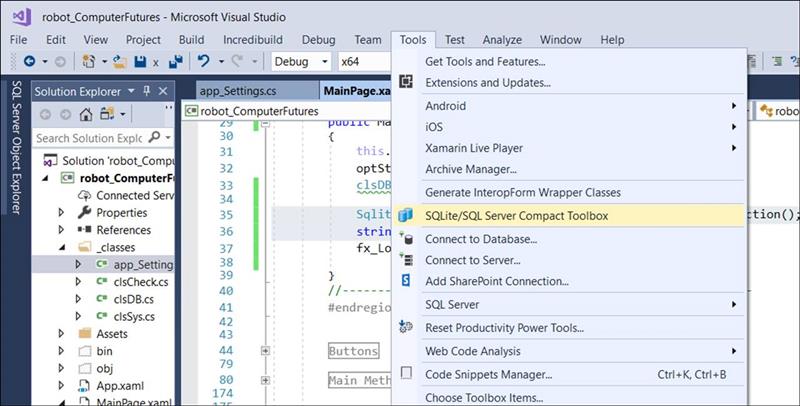

- #Open sqlite file python how to#
- #Open sqlite file python install#
- #Open sqlite file python update#
- #Open sqlite file python code#
In this tutorial, you have learned how to develop a Python program to query data from tables in an SQLite database.
#Open sqlite file python code#
Select_all_tasks(conn) Code language: Python ( python )ĭef create_connection (db_file): """ create a database connection to the SQLite databaseĭef select_task_by_priority (conn, priority): """ This main() function creates a connection to the database C:\sqlite\db\pythonsqlite.db and calls the functions to query all rows from the tasks table and select tasks with priority 1: def main ():ĭatabase = r"C:\sqlite\db\pythonsqlite.db" # create a database connection The fetchall() method fetched all matching tasks by the priority. When the cursor executed the SELECT statement, it substituted the question mark ( ?) by the priority argument. The question mark ( ?) in the query is the placeholder. In the select_task_by_priority() function, we selected the tasks based on a particular priority. This function query tasks by priority: def select_task_by_priority (conn, priority): """Ĭur.execute( "SELECT * FROM tasks WHERE priority=?", (priority,)) In the select_all_tasks() function, we created a cursor, executed the SELECT statement, and called the fetchall() to fetch all tasks from the tasks table.

Print(row) Code language: Python ( python ) This function selects all rows from the tasks table and displays the data: def select_all_tasks (conn): """ The file itself is on a network share (and for policy reasons cannot be copied locally). Some of the queries are running in Python using the built in sqlite3 package, and others originate from SQL queries running in DB Visualizer. Return conn Code language: Python ( python ) I have a 7GB SQLite file and I am running multiple queries on it from different virtual machines in the cloud. In the following example, we will use the tasks table created in the creating tables tutorial.įirst, create a connection to an SQLite database specified by a file: def create_connection (db_file): """ create a database connection to the SQLite database
#Open sqlite file python install#
Unlike MS Access or other commercial database applications, you don’t need to install any additional driver to work with the SQLite database. The library comes with the standard Python installation so no additional action is required to get it. Sqlite3 is a native Python library for accessing SQLite databases.

It’s so simple to set up and use, you’ll see in a second. I use it all the time for making websites, and even workplace projects that are used by small teams (~10 people). When should I use SQLite?Īll that being said, SQLite database is a great tool for small-medium size projects. Also due to its design for local use, the database doesn’t require authentication, which means not a good candidate for enterprise uses especially if you want more control over the data access.
#Open sqlite file python update#
Therefore it lacks scalability if multiple users need to frequently update the database. ConsĪlthough SQLite databases support unlimited read access, only one write access is allowed at a time. The maximum size of the database is said to be 281 terabytes (TB) or 281,000 GB, which is more than enough for most use cases. It can run on almost any device and super easy to set up. The SQLite database is very small but fast and reliable. Unlike MS Access database, SQLite is a real and powerful database application.


 0 kommentar(er)
0 kommentar(er)
